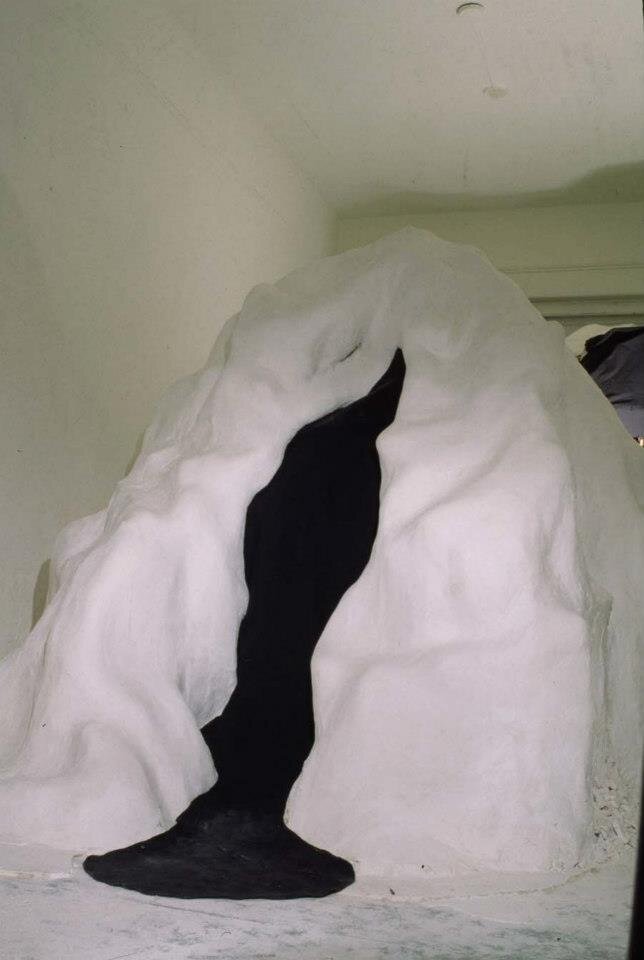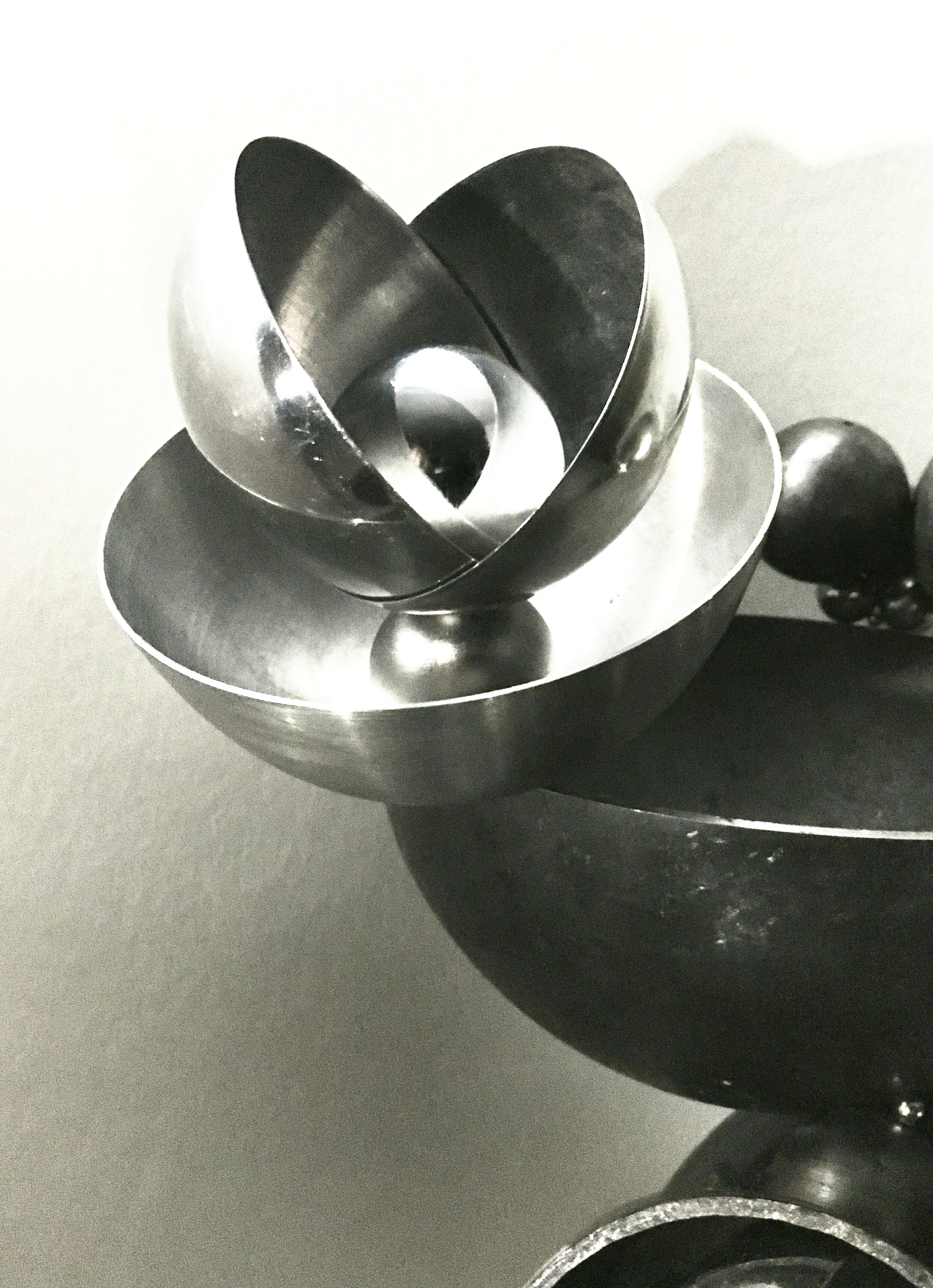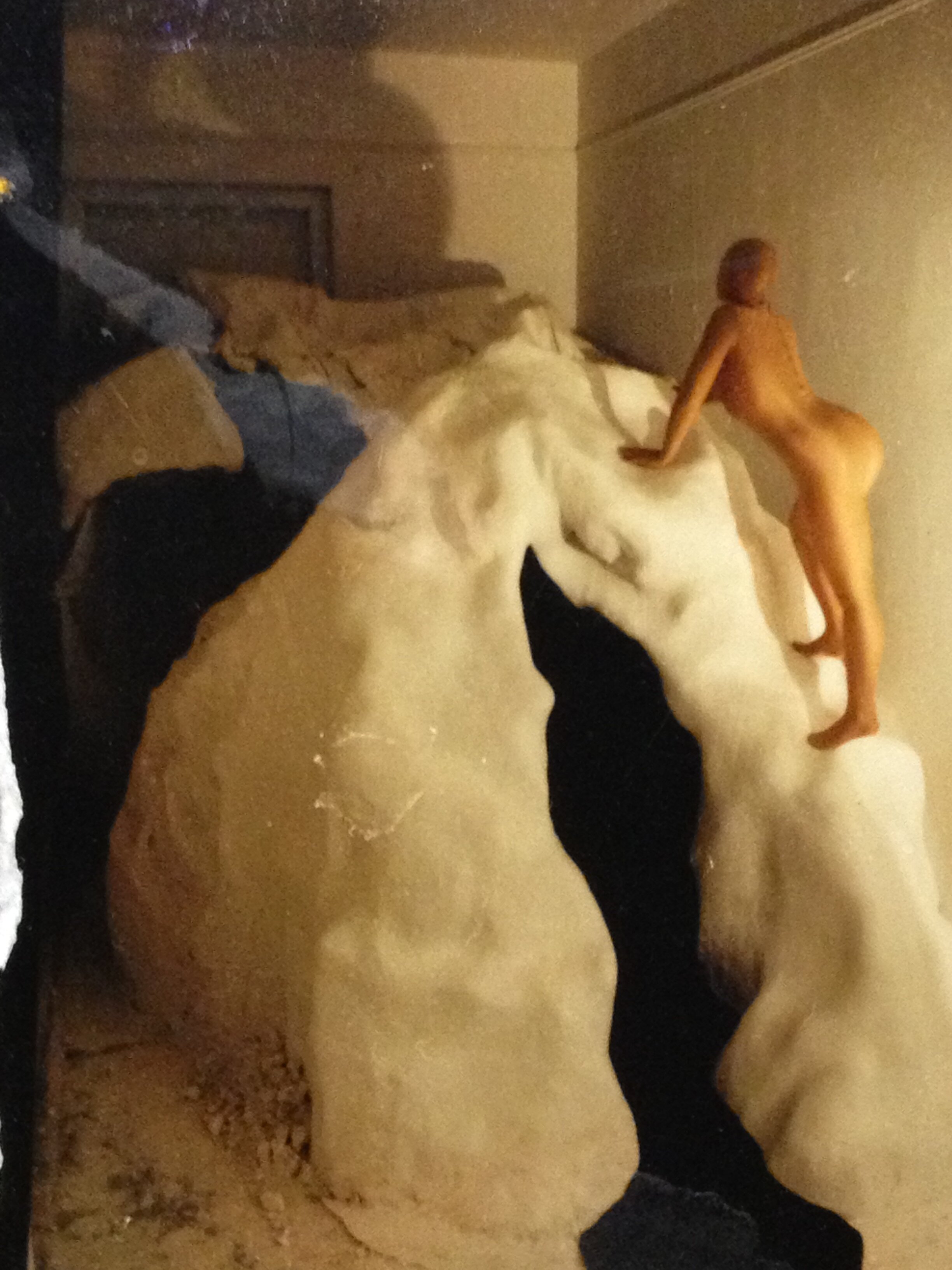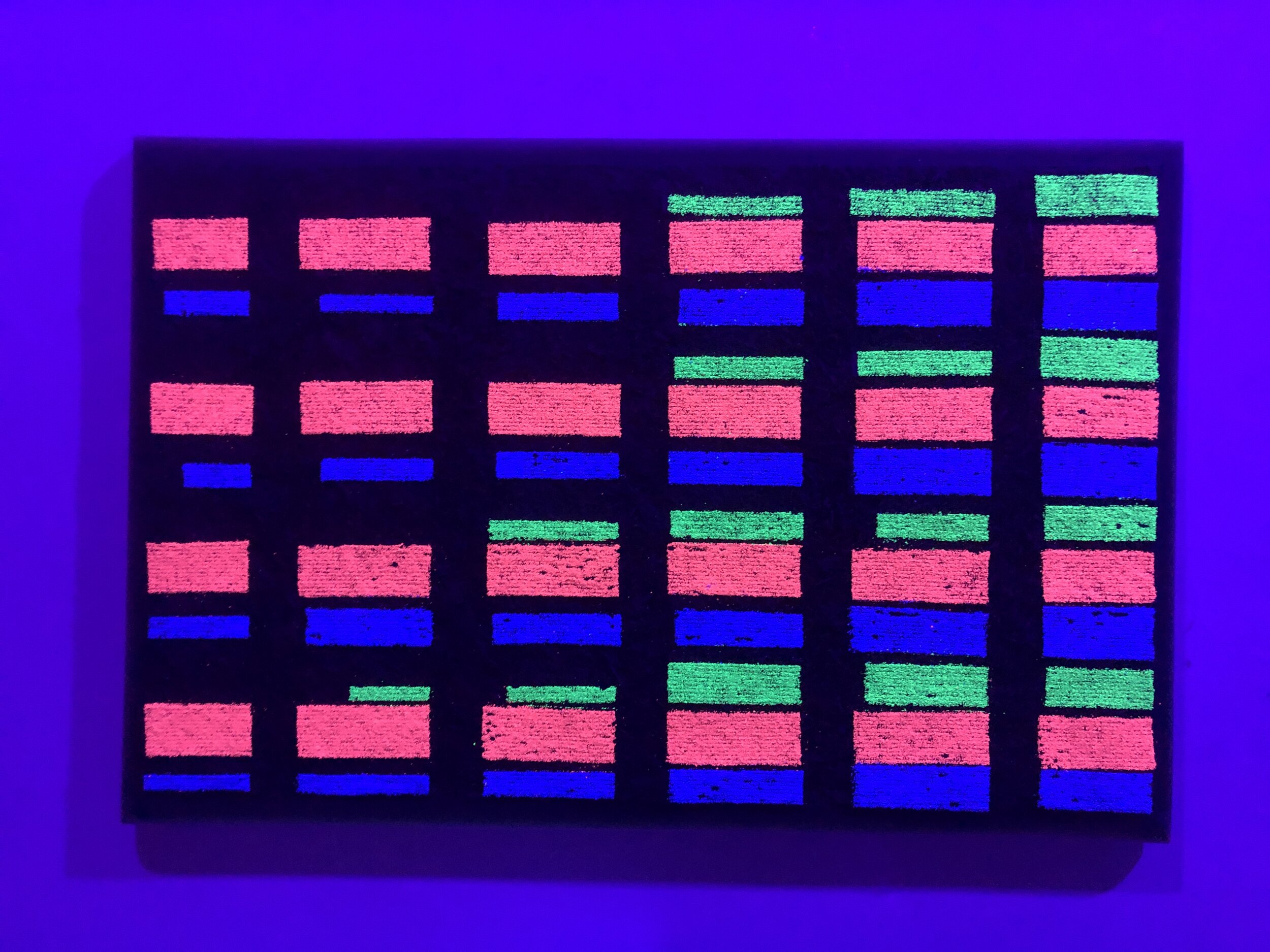INTERVIEW WITH ANNA EHRSAM-BRADLEY RUBENSTEIN
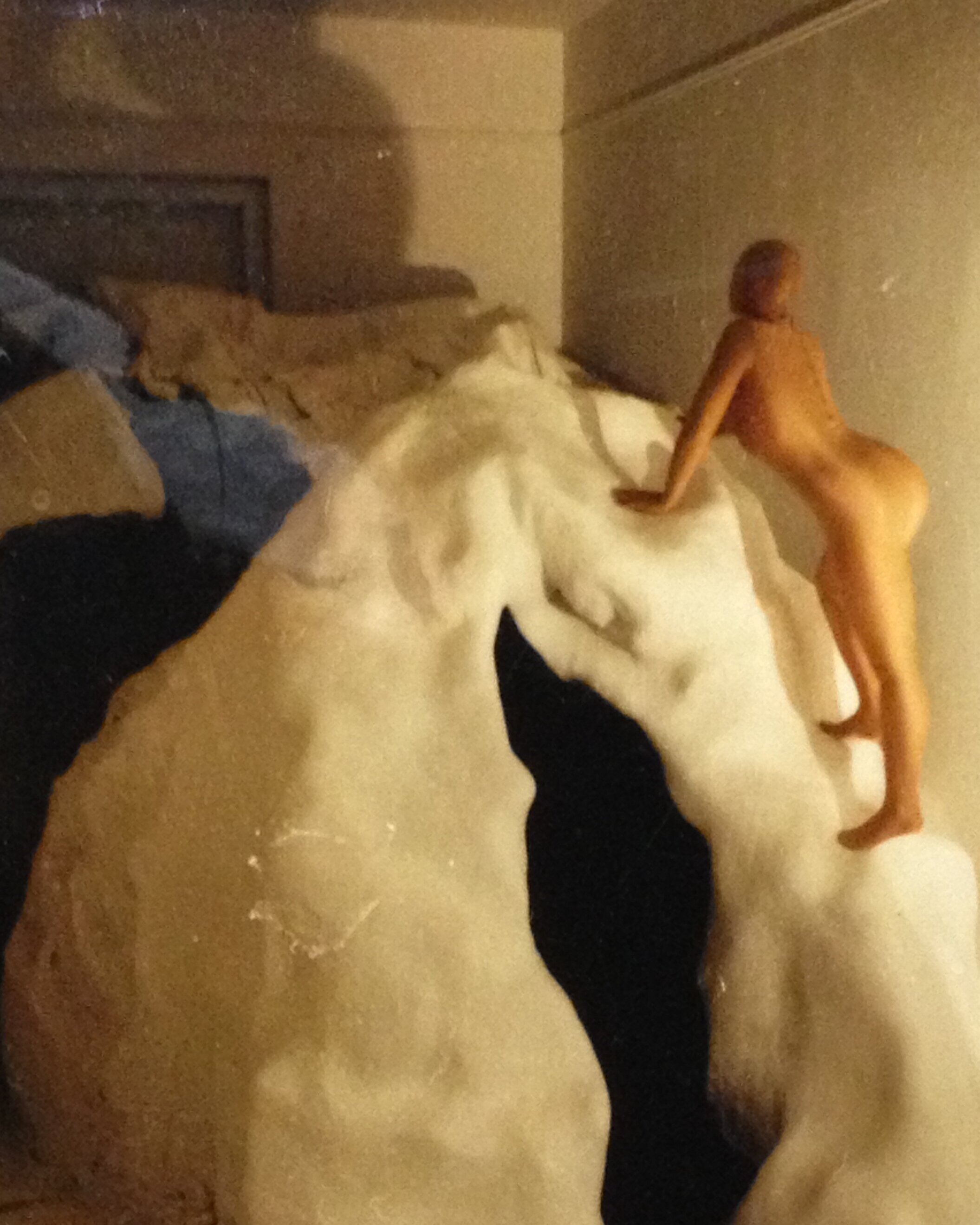
Anna Ehrsam is a fine artist, patented inventor, and a professor of art history and studio art. Ehrsam is the Editor-in-Chief for Battery Journal and co-directs Park Place Gallery. She has also been involved in museum education and exhibition fabrication and design for over 20 years. A few of the museums she has created sculptural installations for include The National Museum of African American History and Culture, Washington DC National Mall; The National Civil Rights Museum, Memphis, TN; and The Smithsonian's American History Museum, Washington DC National Mall. Ehrsam is an internationally exhibiting artist. Her work is interdisciplinary involving new technologies and the development of a unified theory, as it relates to relational systems order theory. She is engaged in a rigorous exploration of new ideas, technology, and forms. The objective of her work is to expand the languages of form, color, light, sound, text, and context, using their intrinsic physical properties to make concrete and ephemeral phenomena, which she embodies in large sculpture, intimate artifacts, immersive installations, images, drawings, documents, and social sculpture. Her recent work captures manifestations of the physical and metaphysical by generating and embodying moments expressed in infinitely permutable forms, images, text, light, video, performance, and photography. Ehrsam makes videos, books, performances, photographs and experimental work with digital and analogue space. She lives and works in Brooklyn, New York.
Bradley Rubenstein: When I sat down to start thinking about your work for this talk, I realized it has been about 20 years that I have been following it. I knew you when you were in grad school, and if I remember correctly we used to run together sometimes. Somehow that seems to be a good place to start. The thing that strikes me most about your early work in performance and sculpture was the physicality of it—in the sense that a lot of your work deals with the body as a subject or field and also that much of your work was very labor-intensive.
Anna Ehrsam: Proving and testing myself with feats of mental and physical endurance have always been part of my work. My physicality gives me the ability to shape matter, words, stone, video, and performance in a way that allows me to network and flow through ideas and material without recognizing limits. I always push beyond in my effort to explore and understand something new.
BEING, 1996, PLASTER AND FELT, 16 ’ X 12’ X 16'
BR: This was at a time when a lot of work being made was what Chuck Close called "Staples Art," meaning that New York was expensive, artists couldn't afford large studios, so there was a lot of Conceptual Art being made from office supplies.
AE: As an undergrad in NYC at SVA I studied with Lynda Benglis, Alice Aycock, Jackie Winsor, Roni Horn, May Stevens, art history with Donald Kuspit, and other great minds to whom I owe so much. Here I discovered performance, video art, and installation and created immersive works of art with a wide range of materials such as steal, plaster, mold-making, video, performance, installation, film, as well as directing. My desire to create immersive works of art in the form of large installations was an attempt to make hermetic alternative realities for myself and others to explore. My work posed an alternative that questioned the collective cultural assumptions about gender, race, class, and power in a political and social context. I focused on issues of power and domination and the inequalities and cultural ills that I witnessed. My body is my primary tool in all of my existential and phenomenological experiments. I set up ways of exploring the physical world and embodying that exploration in the way that best suits the idea. I feel it is the artist's job to train and tune their sensory apparatus to facilitate the fullest perception, reception, and transmission of their experiential relatives in all of its subjective, object, and metaphysical complexity. Artscience is a way of exploring with an arsenal of tools, technology and methodology that allows for the fullest range of possibilities and a distinctly existential way of being, acting, and becoming through conscious self-making.
BR: And before that...
AE: I was an only child who successfully passed as a boy for years. Gender and identity politics are a part of my work. Gender is enculturated and is toxic for both males and females in this culture and at large. We need new behavioral models that allow for the expression of a much more nuanced and healthy form of gender expression and fluidity. I saw clearly the pervasive cultural inequalities of sexism, racism, and classism rampant in our culture of perpetual war. This bigotry was hostile, as was the cultural climate, and I saw these influences as they were enacted by children at play on the playground. Just as I fought to defend kids on the playground from bigotry and bullies as a child, I fight today to defend against the repressive forces in culture that plague society. The playground has changed to a global field of injustice, corruption, ignorance, and war, but my mission to bring about change in the world and help overcome the injustices remains. Through education, art, and technology I strive to enact positive cultural change.
My countercultural upbringing gives me a unique cultural perspective as an outsider. As a child I perceived the adult hegemony as largely untrustworthy because they had clearly fucked up the world so royally. I knew at that time I needed to help change culture and vowed to be a champion for the underdog. I perceived the systemic, enculturated sexism, misogyny, and violence against girls, women, boys, and men as intolerably evil, and I vowed to fight back with all of my might.
INFINITE BODY, 2010 , PLASTER, 9’ X 3’ X 2’
I grew up in Bloomington, Indiana, a progressive international college town where Indiana University is located. Bloomington was a cultural mecca; I was surrounded by artists, intellectuals, and an international academic community. Without a TV or computer I was engaged in deep, durational thought and exploration of my surroundings in a quiet, contemplative, and complex way. Immersed in this radical countercultural environment of artists, musicians, and intellectuals, during a time of social and political unrest and foment, I was often left to my own devices, necessitating that I invent things, draw, build, even make earth works, and construct new narratives. The forest was one of my classrooms. This shaped me in important ways. I spent my time roaming the woods with my dogs, communing with trees, nature, animals, minding my mind. All the while I was painfully aware of the threat of imminent Nuclear Armageddon and perpetual war. But my world was full of art, nature, animals, peace, love, and harmony in a community of artist intellectual hippies. I lived communally with other kids and parents for a time The adults started a daycare and a school, which is still going strong with kindergarten through twelfth grade under one roof. It's called Harmony School. I was distinctly aware of the cultural and institutional ills of the day, most of which still persist. My artwork stems from a desire to bring about cultural change.
I went to Yale for graduate school where I received my MFA and studied with the brilliant art historian and artist Johanna Drucker, along with many great artists such as Richard Serra, Nayland Blake, Jessica Stockholder, Ron Jones, and John Newman. At Yale I continued my performance, video, sculpture, and installation work. I was in Yale University's first video class, taught by Carol Scully the protege of Ken Burns, both of whom are visionary documentarians. Strangely, this pioneering class was held in the video conferencing rooms for the medical school. During my time at Yale I made several monumental works concerning institutional critique, using my body, large architectonic sculpture, video installation, and performance to explore the nature of space, architecture, and ideology. This was institutional and cultural critique from the inside of the ultra-elite bastions of power. I focused on deconstructing ideological structures, rites, rituals, and power relationships using my body as the interlocutor. I moved back to New York City after graduating with an MFA from Yale University and embarked on a large collaborative project with a fellow Yale graduate.
BR: When you did move to New York, you and your partner at that time were collaborating a lot. I remember your big studio building in Long Island City that was like a giant installation. There was a piece you did that I saw at Exit Art, a large morphing thing, that very presciently used the World Trade towers as imagery.
JOINT, 2011, STEAL, MAGNETS, 12’’ X 16” X 12’
AE: I make multidisciplinary complexes, connections, and ideas embodied in installations, sculpture, video, as well as cultural documents. Working with a variety of materials and technologies, I created networks across disciplines to manifest the most stimulating and rewarding experiences, while learning as much as I can about all manner of materials, techniques, and disciplines such as art history, art and cultural theory, physics, materials science, and process. If I'm not making art for myself, other artists, or museums, I am reading, going to art exhibitions, or engaged in discourse about art, culture, and politics with other artists and intellectuals. It was an intense immersion and an invaluable period for me as a developing artist. My early work in NYC was largely based on social political issues of power and domination. I was reading Judith Butler, Michel Foucault, Roland Barthes, Rosalind Krauss, Lynda Nochlin, and Donna Haraway, among others.
The body is imprinted and imposed upon by culture; we become gender labeled, classified, and commodified. We need new models of gender performativity and new relationships to nature and power structures. The landscape contains the idea of freedom and openness, yet it is cultivated, circumscribed, colonized, bought and sold, commodified, and exploited. My sculpture is about body as it relates to landscape, architecture, culture, and power. We are all increasingly cyborgian and have bodies without borders. In terms of physics we are all connected in an infinite web of vibrating strings, exchanging molecules with each other all the time. We are all one organism and part of the same ecosphere. We need new narratives, language, and behavior -- and new ways of being in harmony with nature, animals, each other, and our environment. I am working on an app for conservation biology and ecology called Humanimal, which will promote health and wellness for humans, animals, and the planet.
BR: I have always made a distinction between experimentation in art and demonstration. There are a lot of artists who do their homework and then create things that pretty much look like homework. To experiment means you are manifesting your ideas in a material way, which sometimes works, sometimes doesn’t, but requires a greater degree of risk. Both kinds of work can produce interesting results, though. An aspect of your practice does involve pedagogical sculpture, work that has specific parameters. Can you talk about how that plays out in your work as a whole -- does that influence you at all? Joseph Beuys and Hans Hofmann come to mind as ones who synthesize their practice.
HYPER OBJECT, 2018, MIXED MATERIAL, 22” X 22’’
AE: I am pleased you asked this question. Pedagogy and social justice are deeply embedded in my work and life. I have been a teacher for 20 years with a mission to encourage social activism and critical thinking. As for social sculpture, I have created an art and cultural journal to give a context to my fellow artists and cultural producers. It is important to me to make art that has the power to expand consciousness and promote equality and cultural change. In addition to teaching and art making, I expanded my art scholarship and radical pedagogy beyond the realm of text into a living dialogue with cultural producers. I am also co-founder of Park Place Gallery, where I host and curate exhibitions that promote art, science, and technology in the service of ecology. Art is the heart, soul, and intellect of a culture, and I believe as an artist and educator it is my mission to empower others by promoting critical thinking and creative problem solving in the service of conservation, biology, and equality.
BR: So, much of your recent work explores art, science, and perception. It seems like you have moved away from that physicality in your work and maybe on to something more abstract.
AE: The body's sensory apparatus and physical phenomena have always interested me and inspired me to invent and explore new ways to experience the world, using my body as a vehicle. My interest in physics, science, technology, and my patent work are all part of my exploration of the world.
BR: You are also involved in projects with your work in education and environmental issues. At first these might seem outside of your sculptural work, but I was thinking about Beuys and his idea of a social sculpture. Do you see it the same way in your practice?
BEING, 1996, PLASTER, FELT, AND PERFORMANCE
AE: I believe artists, innovators, inventors, educators, and free thinkers can change the world by presenting radical alternatives to current repressive paradigms and systems, like capitalism, sexism, and racism. I implement a radical pedagogy that interrogates the repressive ideological systems of power, domination, and control. These systems are embedded in culture and inculcated and normalized in the body politic; these repressive systems and norms are accepted as reality. My students accept these repressive socio-political economic systems and conditions as natural because they have not been taught to question authority or the norm. I use art, cultural theory, and art history to present new narratives and possibilities. I show them that language itself is plastic and malleable and that they can control it and shift ideas and outcomes to create new ideas, forms, and meaning. I teach my students to question and interrogate authority through creative thinking and problem solving, and they learn to imagine new self-empowering forms, narratives, and language, which they embody.
Art is the most fundamentally important tool for expanding consciousness and shaping intellectual growth. Through teaching I help shape, guide, and change people's lives. We could classify my creative endeavors as political art, activism, or even social sculpture. In this sense my work is engaged in a relational way with culture shifting and social praxis. Through my cultural production and mentorship I endeavor to promote change on a daily basis.
